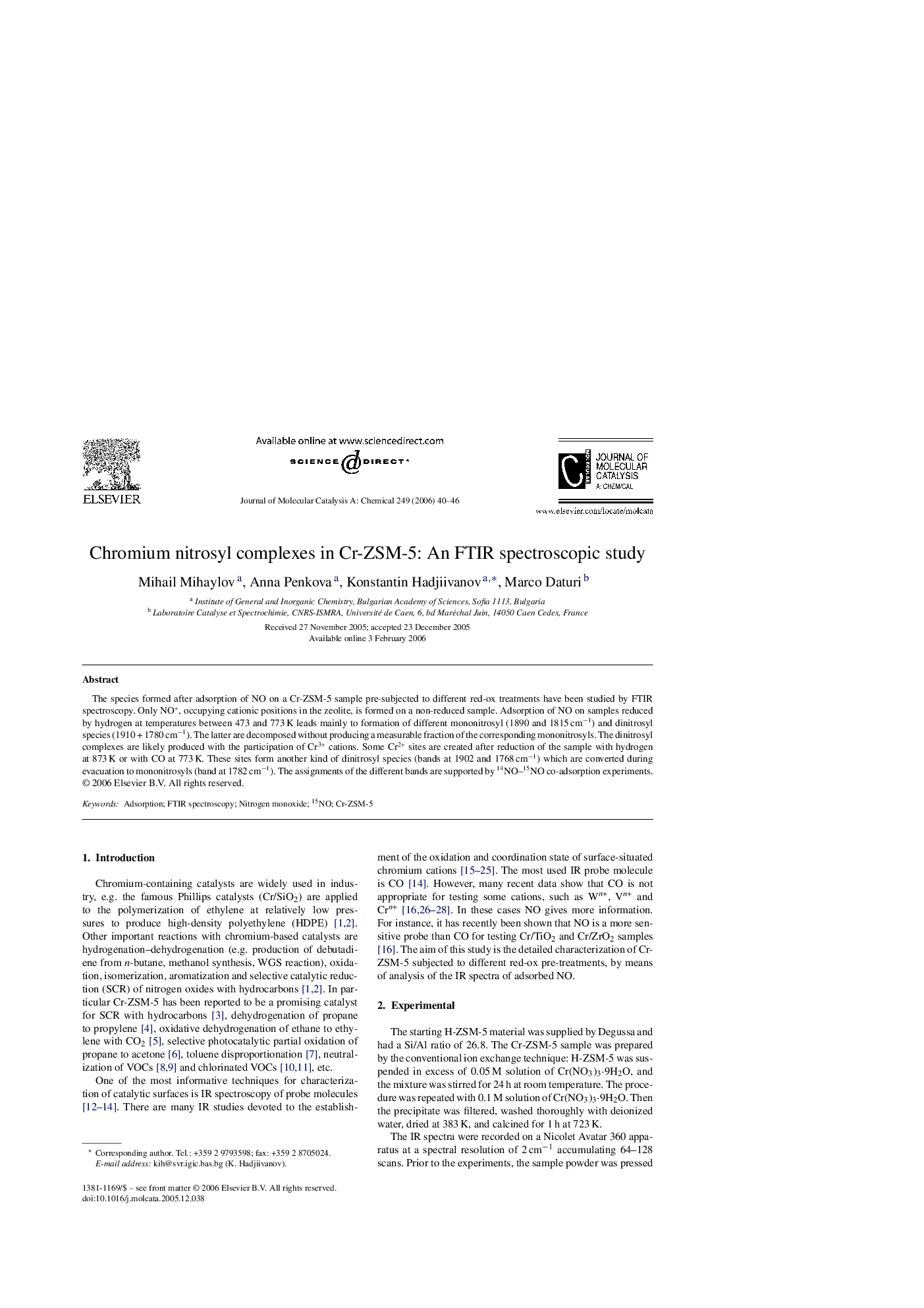| Article ID | Journal | Published Year | Pages | File Type |
|---|---|---|---|---|
| 69007 | Journal of Molecular Catalysis A: Chemical | 2006 | 7 Pages |
Abstract
The species formed after adsorption of NO on a Cr-ZSM-5 sample pre-subjected to different red-ox treatments have been studied by FTIR spectroscopy. Only NO+, occupying cationic positions in the zeolite, is formed on a non-reduced sample. Adsorption of NO on samples reduced by hydrogen at temperatures between 473 and 773Â K leads mainly to formation of different mononitrosyl (1890 and 1815Â cmâ1) and dinitrosyl species (1910Â +Â 1780Â cmâ1). The latter are decomposed without producing a measurable fraction of the corresponding mononitrosyls. The dinitrosyl complexes are likely produced with the participation of Cr3+ cations. Some Cr2+ sites are created after reduction of the sample with hydrogen at 873Â K or with CO at 773Â K. These sites form another kind of dinitrosyl species (bands at 1902 and 1768Â cmâ1) which are converted during evacuation to mononitrosyls (band at 1782Â cmâ1). The assignments of the different bands are supported by 14NO-15NO co-adsorption experiments.
Related Topics
Physical Sciences and Engineering
Chemical Engineering
Catalysis
Authors
Mihail Mihaylov, Anna Penkova, Konstantin Hadjiivanov, Marco Daturi,
